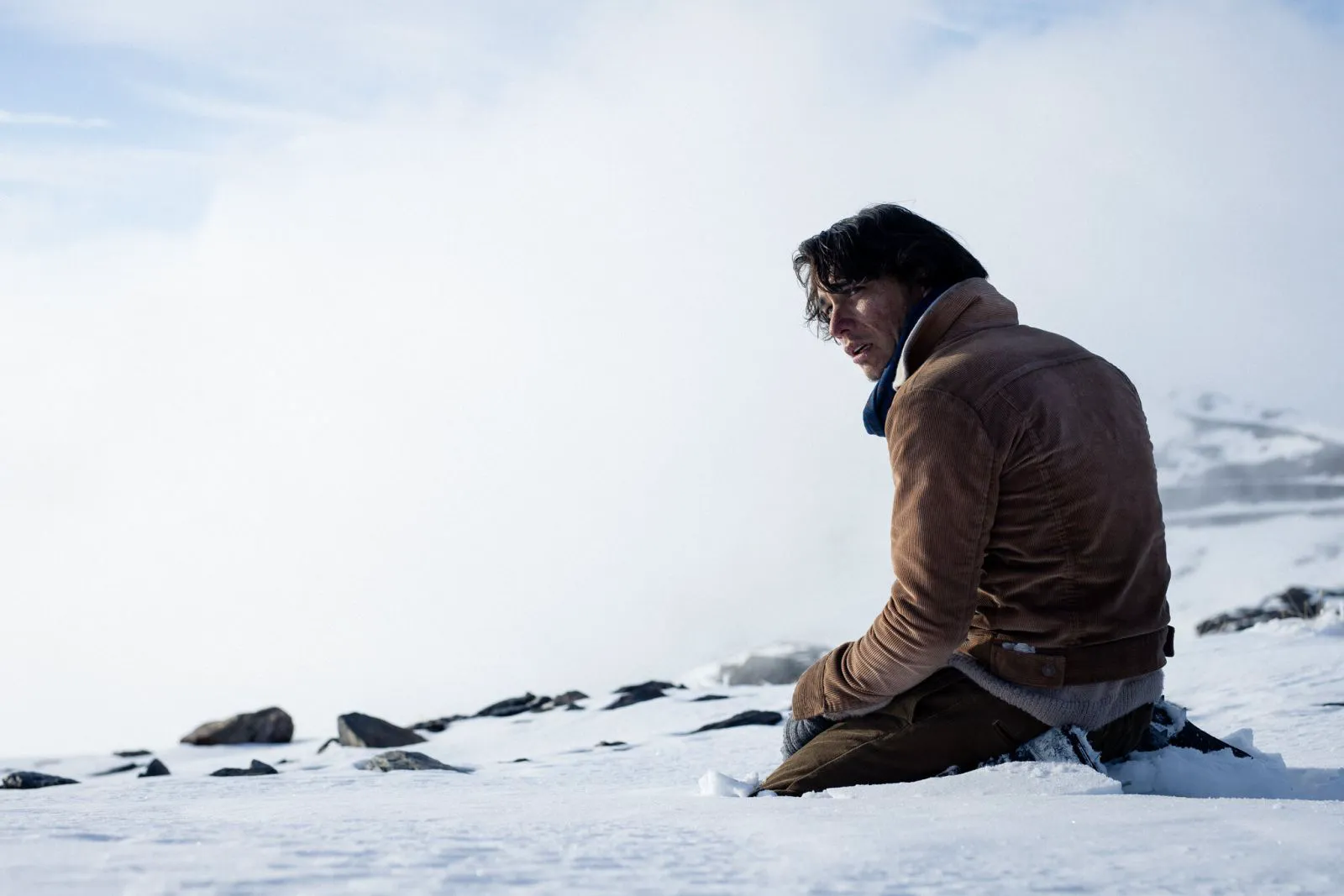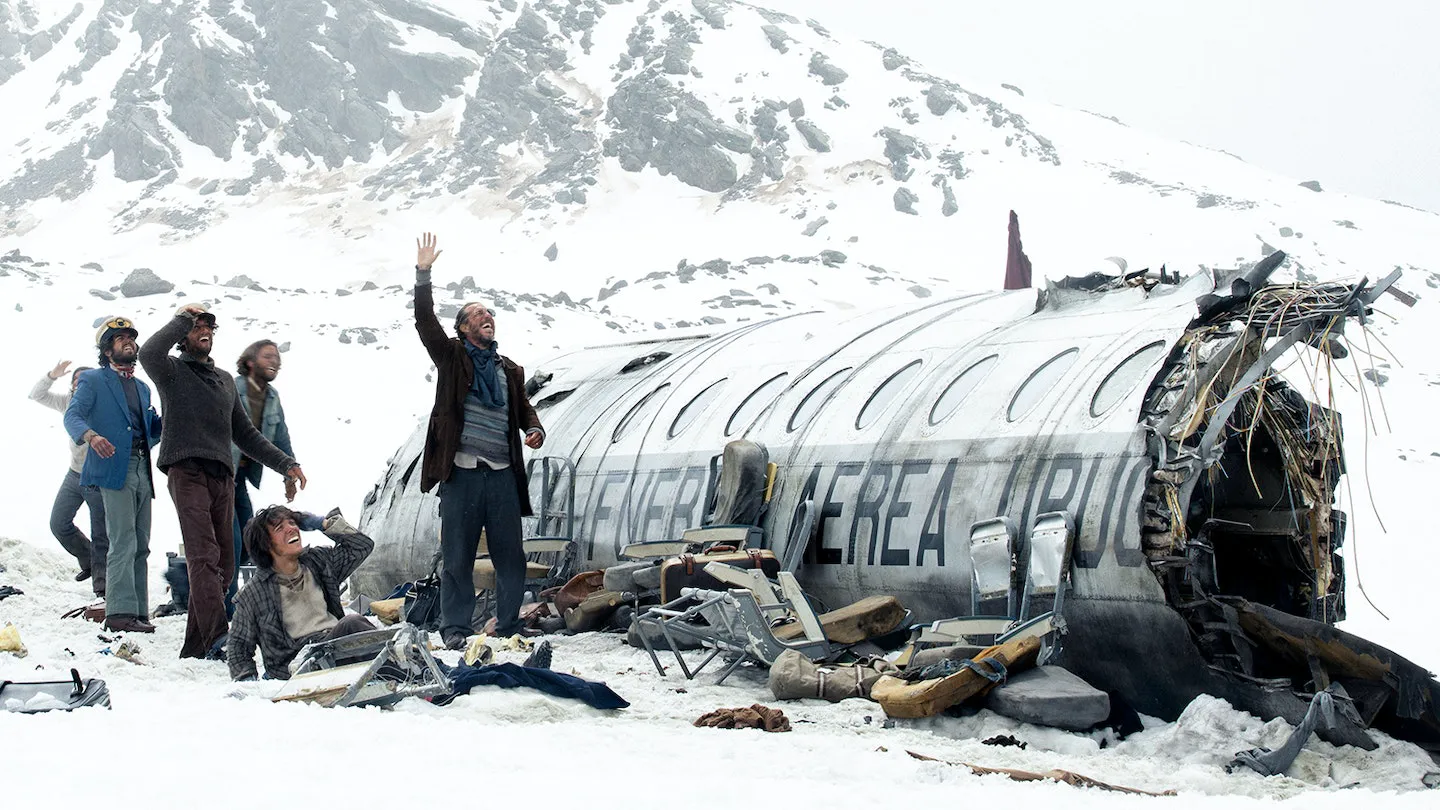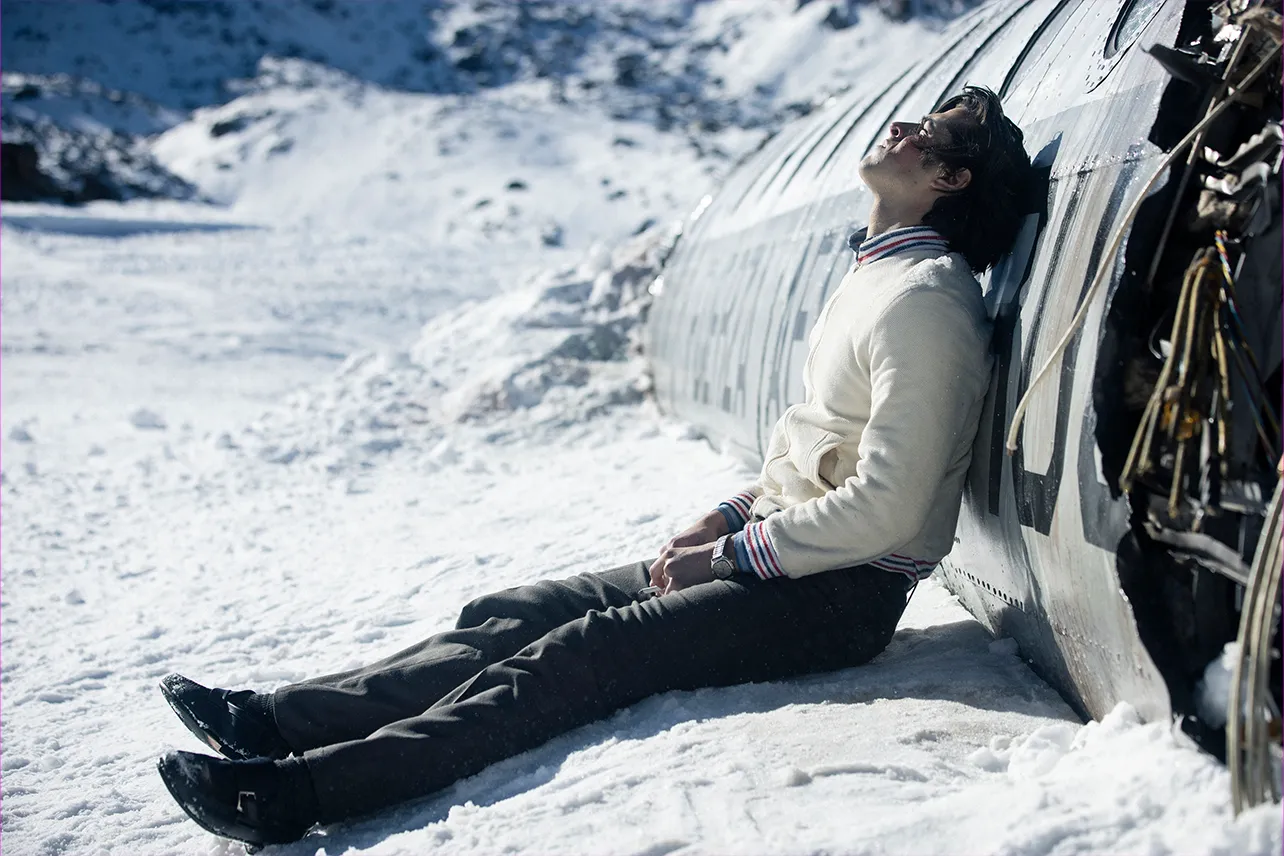In October 1972, a plane carrying a Uruguayan rugby team, along with their friends, family, and crew members—45 people in total—was en route from Uruguay to Chile, traversing the Andes Mountains. As they approached Santiago, the capital of Chile, the aircraft was caught in a cyclone and crashed. Miraculously, 28 passengers survived the initial impact. However, their ordeal had only just begun. Stranded without heat sources or medical assistance, and with dwindling supplies, the survivors faced a harrowing two months in the snow-covered mountains, gradually losing their humanity as they resorted to consuming the bodies of their deceased companions while awaiting rescue.

Enzo Vogrincic in a still from “Society of the Snow”
Society of the Snow: A Chronicle of Survival
“Society of the Snow,” directed by J.A. Bayona, is not the first cinematic adaptation of this infamous disaster. Previous depictions include “Alive” by Frank Marshall, starring Ethan Hawke, and the series “Yellowjackets,” which, while loosely based, draws inspiration from the same events. Bayona’s film distinguishes itself through the director’s deep engagement with the story, aiming to create a film that is both authentic and captivating. Filming took place at the actual crash site, and Bayona meticulously discussed the script with the survivors. One of them, Carlitos Rodriguez, even played a cameo role as his own father.
From Disaster to Film: Bayona’s Vision
Bayona conceived the idea for “Society of the Snow” in 2012 while working on “The Impossible,” another disaster film, but set in a resort. Since then, the Spanish director has explored television (“Penny Dreadful,” “The Lord of the Rings”) and big-budget studio films (“Jurassic World: Fallen Kingdom”), before returning to more personal projects (“A Monster Calls”). “Society of the Snow” fits perfectly into his cyclical directorial trajectory. In some ways, it echoes “The Impossible,” but with a focus on a group of people rather than individual characters.

Matias Recalt as Roberto Canessa in a still from “Society of the Snow”
The Unfathomable Reality of Survival
The survivors spent 72 days, over two months, in the mountains. The film, while primarily a chronicle of survival, repeatedly emphasizes through its characters that the experiences of those days are impossible to fully comprehend from the outside. While the agony of freezing without warmth and the gradual descent into cannibalism are depicted frankly, “Society of the Snow” remains consciously illustrative. The subject it illustrates remains both dazzling and unknowable. Yet, this superficiality doesn’t detract from the film’s impact; it feels intentional. The brilliant imagery doesn’t pretend to be a treasure trove—it’s simply snow, but exceptionally white.

Enzo Vogrincic in a still from “Society of the Snow”
A Comprehensive and Compassionate Portrayal
The film’s substantial runtime of nearly two and a half hours feels justified. It includes a prologue showing the preparations in Montevideo and a thoughtful, unhurried ending that follows the survivors beyond their rescue. A sympathetic tone permeates the entire film. While the characters themselves might speak of luck (they survived!), the director and viewers alike see them as victims of a series of unfortunate events.
(Video player loading)
The Value of Teamwork in the Face of Death
“Society of the Snow,” an exemplary disaster film, portrays remarkable resilience in extreme circumstances, where individual heroism is secondary to discipline. While every life is precious and every death a tragedy, both often depend on collective effort rather than individual acts of bravery. Avoiding deep dives into psychological trauma or documentary-style depictions of daily life, Bayona delivers a spectacular film about the value of teamwork, through which individuality can be preserved. While this may not always be the case, in the face of imminent death and surrounded by nearly 30 companions, relying solely on oneself or any single individual seems truly impossible.